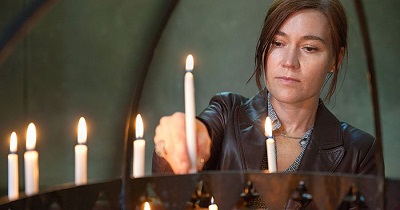
Although grief is a natural process, many of us were taught from a young age to contain our feelings and to act like we’re OK even when we’re not. Emotional pain and grief can be so frightening that we try to push it away and to distract ourselves to avoid truly feeling it. C.S Lewis said “No one ever told me that grief felt so like fear.”
Witnessing someone else’s grief can be confronting in that it reminds us of our own past losses or ones we will face in the future. By accepting our own grief we might find it easier to have empathy for another’s heartache.
What if grief is a skill, in the same way that love is a skill, something that must be learned and cultivated and taught? What if grief is the natural order of things, a way of loving life anyway? Grief and the love of life are twins, natural human skills that can be learned first by being on the receiving end and feeling worthy of them, later by practicing them when you run short of understanding.
– Stephen Jenkinson, Author
 The grief cycle
The grief cycleA chance to heal our deepest wounds
When natural disasters or other globally traumatic events occur, there’s a collective experience of shock and grief. Often there’s widespread media coverage of the event, which reinforces a sense of national tragedy.
People feel the need to share their sorrow and acknowledge loss even if the event hasn’t directly impacted them, and rituals such as funerals or spontaneous tributes and shrines are important therapeutic steps in the grieving process. It builds a foundation for the transition to a new beginning.
If we allow ourselves to experience the full impact of our grief, it has the power to heal the deepest of wounds. Shock is usually the first response to loss. It’s a protective transition into intense and overwhelming feelings that range from despair and anger to relief and joy.
People sometimes try to pull themselves prematurely out of their grief. They resist it because they think that what they’re experiencing is perhaps not normal, and carry thoughts about grieving that prevent real healing from occurring.
 Children naturally understand the nature of grieving
Children naturally understand the nature of grievingWe are born knowing how to grieve
There could be pressure from friends and family, or a self-imposed expectation to move on. An “aren’t you finished grieving yet?” attitude rather than “Have you grieved enough? Have you cried enough?” How long it takes is individual, there is no time-line for grieving. We are concerned that openly letting out our sorrow will make other people feel uncomfortable.
Each culture has its own mourning ceremonies, traditions and behaviours to express grief. In a culture where there is an absence of real ceremony, where death is not fully integrated into life, holding back strong emotions might even be considered virtuous.
Yet we are born knowing how to grieve, crying naturally to release tension and purge emotions. Positive expressions of our grief can be healing, whilst suppressing it can destructive and inhibit our ability to genuinely connect with others.
 The healing power of grief
The healing power of griefGrief arises from the soul
Grief undermines the quiet agreement to behave and be in control of our emotions. It is an act of protest that declares our refusal to live numb and small. There is something feral about grief, something essentially outside the ordained and the sanctioned behaviours of our culture. Because of that, grief is necessary to the vitality of the soul. Contrary to our fears, grief is suffused with life force… It is not a state of deadness or emotional flatness. Grief is alive, wild, untamed and cannot be domesticated… It is truly an emotion that rises from the soul.
– Francis Weller
By embracing our grief we have the opportunity to not only heal our deepest wounds, but also to tap into the creative force of those once-buried emotions. From this place of openness we have the power to take control of our own healing journey and inspire the world around us to do the same.
